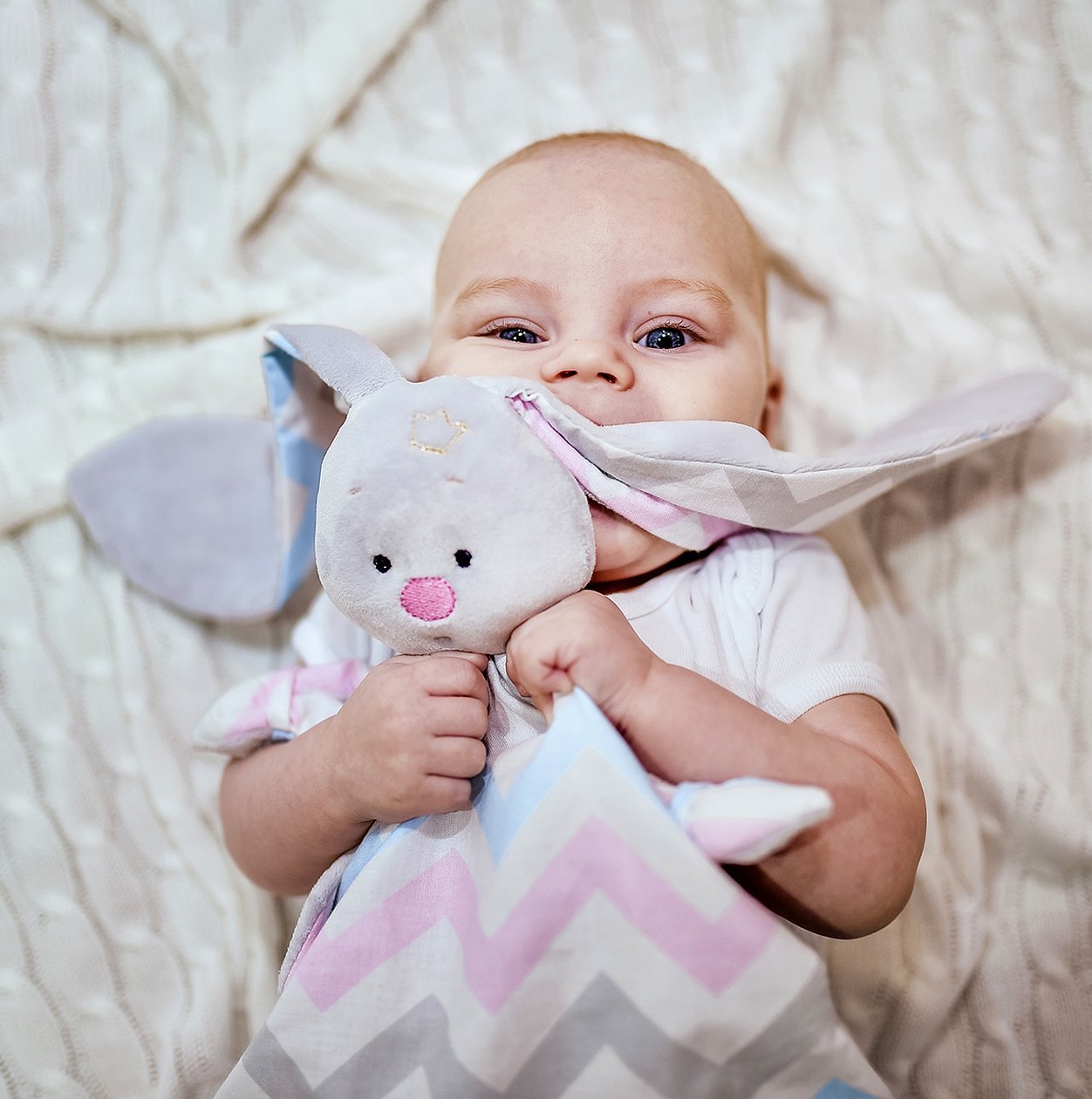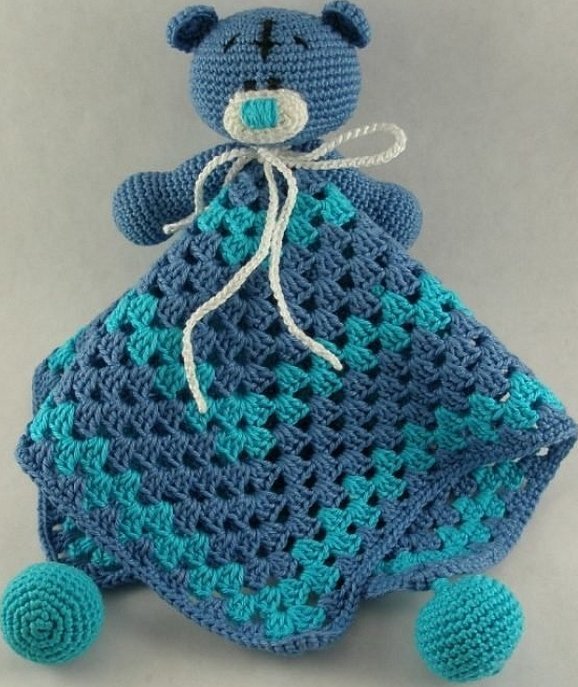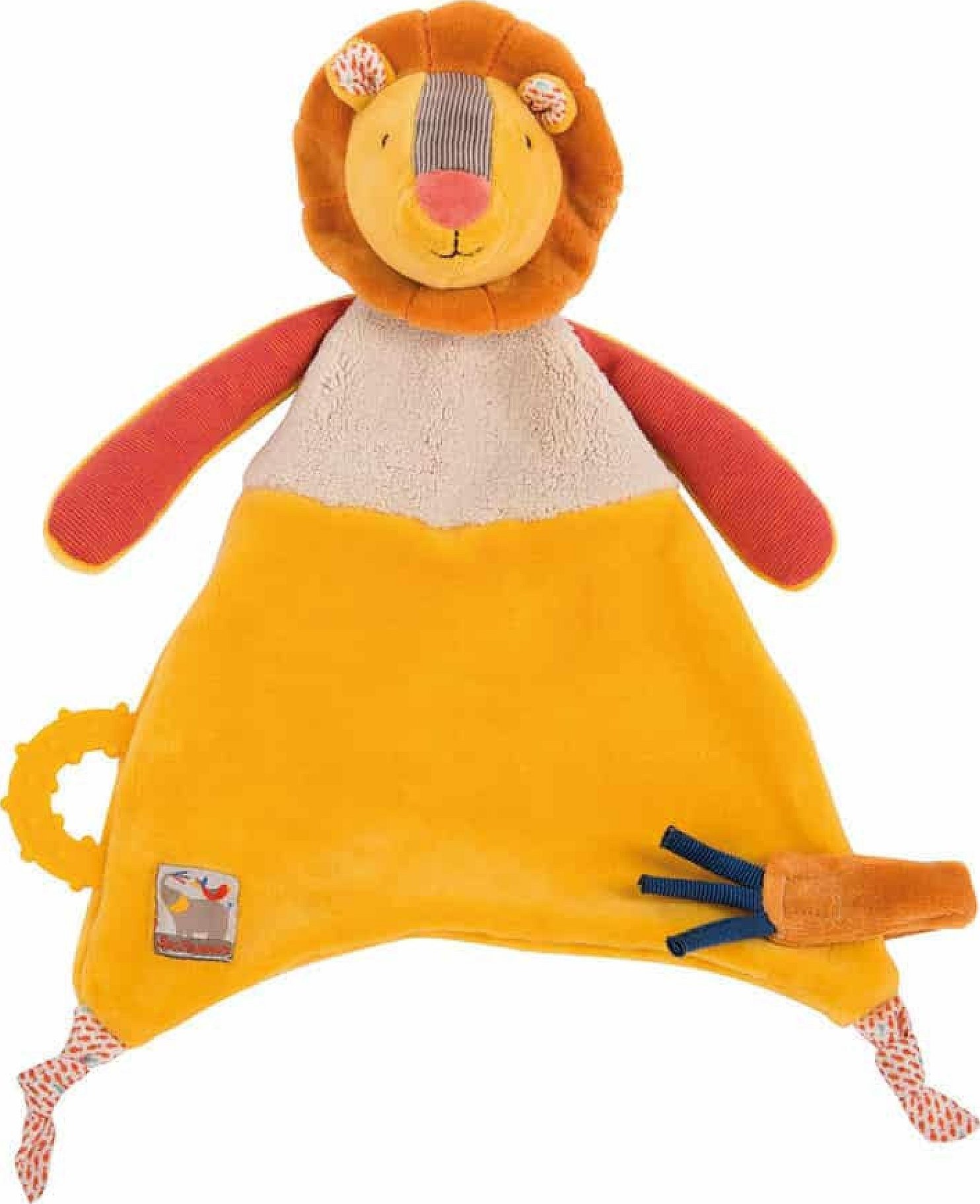Small children become very attached to certain things. It could be a toy, a rattle, a pacifier – any object that can be stroked, touched, and that helps the baby feel safe. We are talking about so-called comforters or sleepy toys, which are in high demand in the relevant market sector. These toys can be bought ready-made, but some prefer to sew a comforter for newborns with their own hands using a pattern.
Purpose of the comforter
The history of comforters dates back to the 90s of the last century in Great Britain. It was then that a young Englishwoman, Susan Canizzo, became a mother for the first time and seriously thought about what could be done to make her child feel her care day and night, even if she was not nearby. Noticing that the baby was constantly fiddling with a blanket and handkerchiefs in his hands, the woman sewed him a toy. This toy was a diaper with a toy head sewn in the center. The woman put the toy to her chest, and then put it in the crib. The newborn felt his mother's scent and fell asleep much faster.
Susan Canizzo built a successful business on this simple invention, and it continues to thrive.

Psychologists and pediatricians confirm the fact that comforters help a child cope with fears and calm down if the mother needs to step away. Saturated with the mother's scent, they create a feeling of the mother's presence nearby. As a result, babies feel calmer and more confident.
The toy develops fine motor skills in children. They often chew on it when their teeth start to come in. And for slightly older children, the comforter becomes a friend that helps them adapt faster in unfamiliar places. Most often, children's interest in the comforter remains until they are three years old, but sometimes children use the toy until they are 6-7 years old as an ordinary doll.

What are they?
Comforters can be divided into two groups - branded (produced by the inventor) and homemade. The material used for their production is natural. But sometimes synthetic fabric is used. The presence of synthetics increases the service life of the toy, but is not recommended for newborns due to the high risk of developing an allergic reaction.
Important! Comforters made from natural fabrics absorb the parents' scent better.

How to do
Many people consider the cost of branded comforters too high and are looking for a way to make a comforter themselves. Such a solution is not only economical, but also provides a wide scope for creativity. The craftswoman herself has the opportunity to choose what kind of toy will be sewn: a bunny, a teddy bear, a cat or something else.

A homemade toy will probably appeal to a child no less than a factory-made one. In addition, the sewing process itself will not be difficult. And if difficulties or a crisis of ideas arise, you can always find a suitable master class on the Internet.
Materials and tools
If you already have a pattern for making a comforter toy, all you have to do is prepare the necessary materials and tools, and you can start working.

Regardless of what kind of toy you are planning - a hare, a cat, etc. - you will need:
- pattern;
- pins;
- about 1 m of main fabric;
- any contrasting fabric;
- floss for embroidering eyes;
- stuffing for the tail (if any) and head;
- scissors;
- chalk for transferring the pattern onto the fabric;
- pencil or stick for stuffing the toy.
The most convenient way to sew is on a sewing machine. But if you don't have one, you can do the seams by hand.

Interesting! A sleeping toy can not only be sewn, but also knitted. But this option is only suitable for those mothers who know how to hold a hook or knitting needles.
The best materials for sewing comforter are cotton, chintz or bamboo. Holofiber or synthetic padding can be used as a filler. These are lightweight and hypoallergenic materials that hold their shape perfectly. As a result, the face of the sewn toy will not deform over time and will retain its original appearance for a long time.
Sewing sequence
The most difficult thing in how to sew a comforter for a bear or a bunny using a pattern is to finally decide on the model and choose a beautiful natural fabric.
For such a craft as a do-it-yourself comforter toy, patterns can be found on numerous handicraft or “mommy” sites and forums on the Internet.
Important! To sew a sleeping toy, you don't have to buy new fabric. You can use scraps left over from other crafts, old diapers, fleece blankets - in a word, anything that you have at hand.
The sewing algorithm is almost identical in all cases:
- find or make a pattern yourself on paper or tracing paper;
- transfer the pattern onto the fabric;
- cut out the details;
- sew the parts together;
- stuff the toy with stuffing.
The size of the toy is an individual parameter. But you shouldn't make the comforter too big or too small.
It is strongly recommended not to use hard parts and small fittings when decorating the toy's face. The baby can easily tear off a button or bead, put it in his mouth and choke. To avoid this, it is strongly recommended to limit yourself to smooth embroidery and not to sew any elements to the comforter that can injure the baby in any way.
Master class: Life-size comforter bunny
The toy can be sewn for your child or as a gift. To get a beautiful comforter bunny, the pattern with the dimensions should be taken from a reliable source or made by yourself.

The process of sewing a comforter bunny according to a pattern should look something like this:
- The full-size pattern is transferred to the fabric. For convenience, it should be pinned and carefully outlined with chalk, providing allowances of 1-1.5 cm for seams.
- After transferring the pattern, you will get the following parts:
- body - 2 pcs.
- ear - 2 pcs.
- head - 2 pcs.
- head wedge - 1 pc.
- The pieces are folded face inward.
- Sew the body. At this stage, it is important to leave a few centimeters unsewn at the top of the workpiece. The opening will be needed to turn the body inside out. In addition, the head will be attached here later.
- The finished body is turned right side out. To carefully turn out all the corners, it is most convenient to use a knitting needle or a hook.
- The paws are filled with filler. To do this, you will need to take a needle and make a horizontal seam. In this case, you need to step back from the edge of the future paw and tighten the fabric a little. A small amount of padding polyester is placed in the resulting bag as a result of the described manipulations, after which the thread is secured and hidden inside the toy. Similar actions are performed with all the remaining limbs of the bunny. When filling the paws with padding polyester, you must ensure that the same amount of filler is used. Otherwise, the toy will not be symmetrical.

- Sew the darts onto the head wedge blank.
- Using pins, connect the wedge to the two head pieces.
- Sew the head, leaving a small space for turning the fabric inside out and filling with synthetic padding.
- Turn the sewn piece inside out and fill it with synthetic padding.
- Sew the ears along the seams. Since the size of the rabbit ears is quite long, they can be decorated with embroidery with the name of the future little owner of the toy.
- The ears are sewn to the head using a blind stitch.
- Embroider the hare's muzzle. It is recommended to tighten the ends of the threads a little after completing the embroidery. This will give it a slight relief.
- The head is sewn to the body using the same blind stitch.

With minimal sewing skills, you can make a hug toy in just a couple of hours. Alternatively, a similar product can be crocheted or knitted.
Comforters have appeared on the Russian market relatively recently. Not everyone is ready to pay 800 to 2000 rubles (depending on the specific model) for a branded “hug,” but most people can make one themselves.*
Those who do not want to spend money or do needlework can use the most budget-friendly analogue - put an ordinary diaper under the breast when feeding, and then leave it in the crib with the baby. Although this option will not look cute, with its main function - preserving the mother's smell and transferring it to the child - it will cope no less successfully than an expensive toy.
*Prices are valid as of September 2019.




